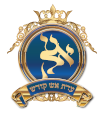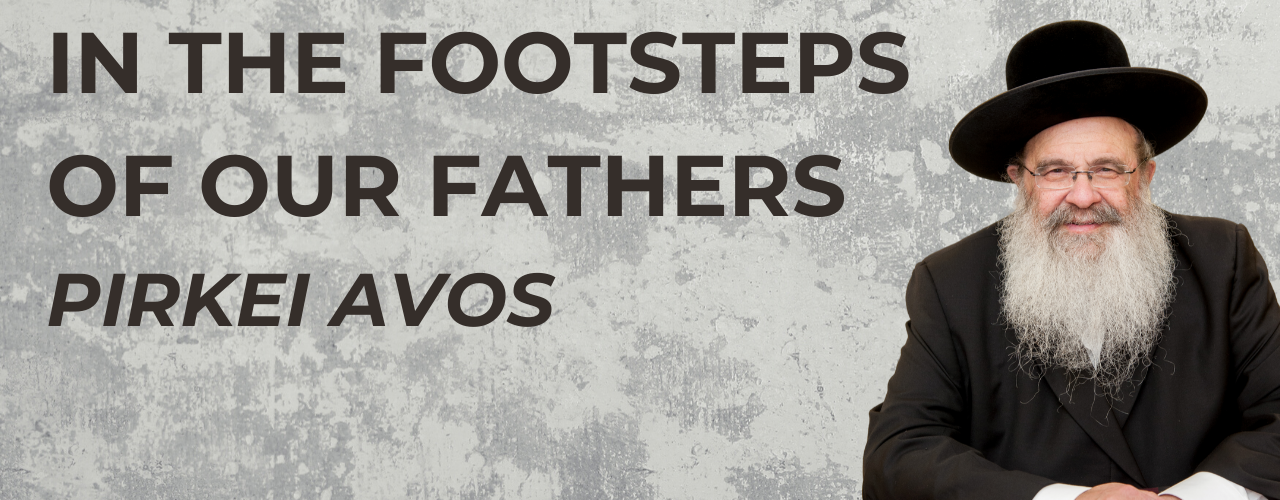CREATING NEW SOULS
Print-friendly version
In the Footsteps of our Fathers Avos 4:5
CREATING NEW SOULS
Harav Y. Reuven Rubin Shlita
I received a letter one morning, nothing new about that, but this one wasn’t a bill or a misplaced advertisement for some local pizza shop. No, this was a proper letter. It came from a young couple that had met in University in Manchester years ago. They were asking if I could help them in the matter of their young daughter’s schooling.
I was momentarily shocked in that I had forgotten how fast little babies grow and how many years had flown past since these two young people were married. It turns out that they would like to send their oldest child to a very frum school but are having problems getting her in because the school was oversubscribed. Would I be kind enough to send the school a recommendation telling the school governors that they were of fine character? Would I? Obviously, I would, because they were more than of fine character, they were super stars in the realm of baalei teshuva. They had become interested in Torah truth at university, and because their teachers (local SEED partners) were inspired, they became totally imbued in our rich spiritual life style. Not only this but they became a living example to many of their peers, and now others are living a Torah life because of their influence. This set me to thinking; I see such examples daily and feel that this is indicative of a much greater ground swell.
There are revolutions that occur in bold letters, with wars and drama written in blood. Then there are the quiet revolutions that are brought about in small changes, subtle nuances, and almost silent moments that change reality.
In the Torah world we are seeing just such a change, one written in the smiles of a whole new generation that previously would have been thought lost to Klal Yisrael. When I was a young bachur there were almost no facilities for learning Torah if you were not born into a heimishe family. With the notable exception of Lubavitch and a very few others, late starters were left to flounder about trying to find kind-hearted people to learn with them. Adult education with a view for kiruv was almost non-existent, and the results were a generation of lay people with no understanding of halacha or our mesora. There were many reasons for this sad state of affairs. The Torah world had just come through the traumas of the Holocaust, yeshivos had to be rebuilt, and new kehilos created from scratch. The Torah world needed time to regroup, find its feet in new circumstances, and learn about the environment they now found themselves in. What was going on in the rest of the world would have to wait a bit, the Torah educational system was too young to take on the challenges of what the unaffiliated posed.
However, this picture was only superficial, for those who were our Torah leaders were planting the seeds of future activity. They were teaching those who were in their charge that they would have to one day face their responsibilities for Klal Yisrael, and reach out to brethren previously thought to be lost. Our gedolei haTorah imbedded into the hearts of their talmidim the ability to rise up to these challenges when no one else thought such a need would ever be actualized.
To reach out to such neshamos one needed a deeper understanding of what imparting Torah knowledge is all about. Talmidim had to accept that the call to Torah teaching would not always be found in the safe and insular halls of their yeshivos. One needed an inner strength, and it was this that was imparted. Not in broad strokes or major speeches but instead in an incremental education that was instilled through the telling of holy stories, the prodding of the conscience, and the slow building of warmth for the souls of all Jews.
The Torah teacher knows how to transfer this warmth and empathy to his students. The listener may not know it’s happening, but it is. This is because the Torah scholar has himself learned from unique teachers.
Listen to this mishna and see what I mean.
“If one learns in order to teach, it is granted to him to learn and to teach; but if one learns in order to practice, it is granted to him to learn and to teach, to observe and to practise.”
The Sfas Emes points out that the Hebrew word used for the second scholar’s motivation is la’asos, to create. The mishna is telling us that someone who teaches and learns with the intention of rectifying the spiritual damage society has sustained will see success in every facet of his quest. This comes because such a teacher is actually creating a new being when he teaches; he is giving a new lifeline to someone who was otherwise drowning.
Reb Shmuel Shinever visited the Rebbe Reb Bunim for the first time and introduced himself. The Rebbe said, “If it is your wish to be a good Jew, your coming here was for nought; but if you wish to learn to be a good Jew, it is well that you have come to me.” In his pithy manner the Rebbe was telling the young man that if you just want to pick up information without integrating it into your very being, then you are in the wrong place. In Peshischa and later in Kotzk the main value of learning was one’s ability to use such knowledge and create a new spiritual reality.
Those who survived the Holocaust came with minds full of knowledge, but even more, their souls were afire with the need to teach that knowledge so that a new generation would spring forth. They knew that not only did they have to teach, but more importantly, they also had to create. They did this on foreign soil, in places where Torah was not known to be alive. This bren is what their students received, and it is this that gave them the ability to “create” further.
Yes, the revolution is all about us, Torah is now learned in places that barely thirty years ago were completely without any sign of Jewish practice. In America today there are kollelim in cities I remember as a child as being so far from Orthodoxy that they didn’t even come up on the Jewish radar screen. Now they are learning there, they have eruvim built around their communities, and their children flock to Eretz Yisrael to learn further. Who did this? Who planted these seeds? Teachers who lived as the mishna intonated, to learn, to practice … to create!

